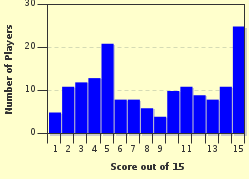Quiz Answer Key and Fun Facts
1. Which place has stations called Pier and Town?
2. Which of these two places have a station called North and South?
3. Where would you find Monkhill and Baghill stations?
4. Which town has stations called Foregate Street and Shrub Hill?
5. Which place has or had a second station called Castle?
6. Where would you find Wallgate and North Western stations?
7. Which town had stations called St Mark's and Central until 1985?
8. Where can you find Central and Lea Road stations?
9. Which place has stations called Town and Road?
10. Where could you have found a place name with Slipway and Vauxhall as destinations?
11. Which town had stations called Central and Eastgate?
12. Where will you find Junction and Pen Mill stations?
13. Until 1965, where could you travel to Midland Road and Bute Street?
14. Which three places have or had a West and Central station?
15. Where would you find Midland and St John's stations?
Source: Author
satguru
This quiz was reviewed by FunTrivia editor
Leau before going online.
Any errors found in FunTrivia content are routinely corrected through our feedback system.

